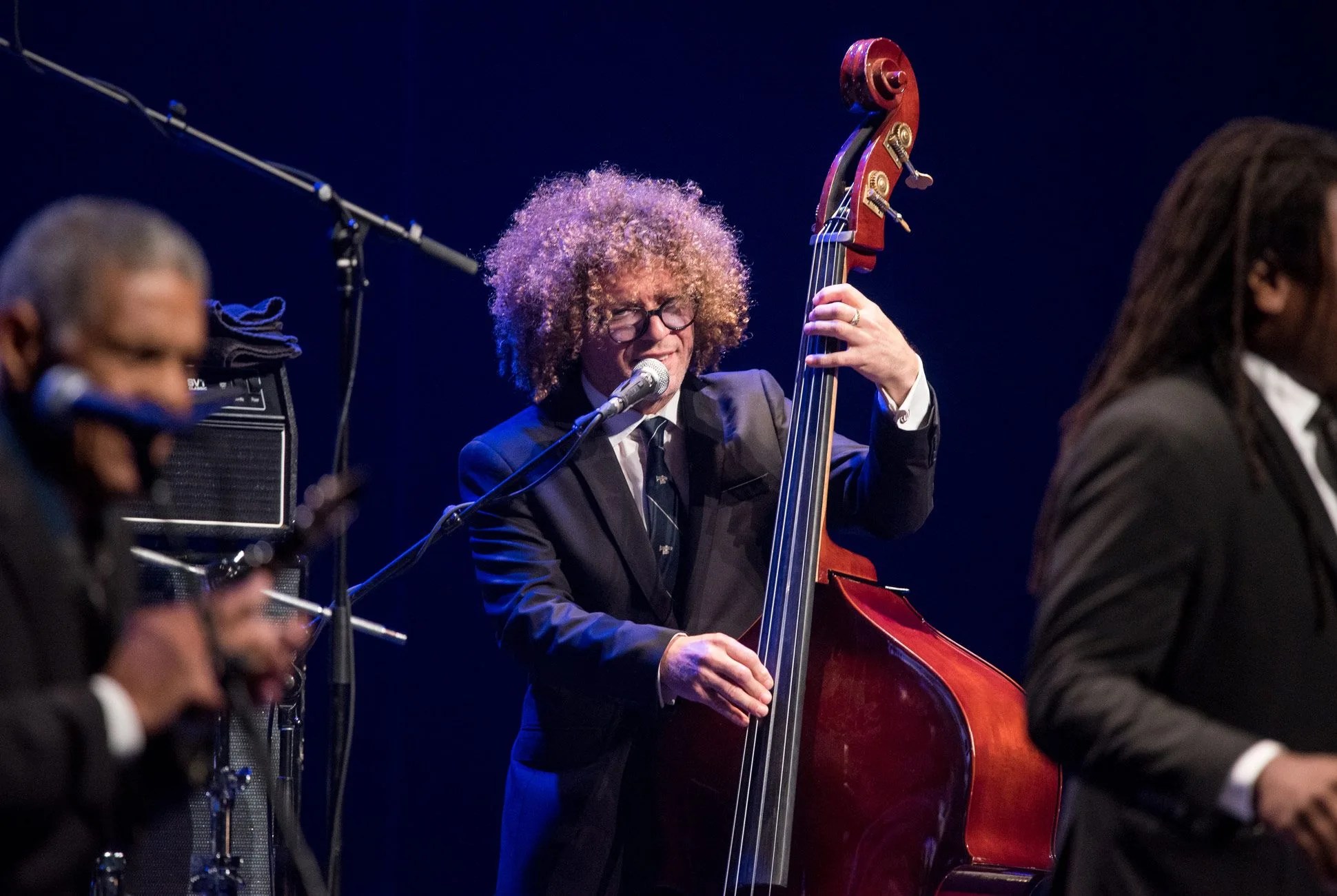Sitting backstage before the Preservation Hall Jazz Band closed the 2016 Montreal Jazz Festival, bandleader Ben Jaffe relaxed in a starkly empty dressing room. The soundcheck had run long — wireless mics were acting up — but as the rest of the band headed out for a quick bite to eat, the 45-year-old bassist and tuba player took a moment shed light on the history of New Orleans jazz. Jaffe’s gaze was relaxed, shaded by blue-lensed glasses, but he was quick to point out the misconceptions from many people interested in the genre. “People are focused on the music, and it’s not the music, it’s the musical families,” said Jaffe. “It’s the line that you draw through it. What is the connection from today to then, and what’s the connection from today to tomorrow?”
Jaffe’s father started the New Orleans-based Preservation Hall Jazz Band in the early ‘60s, one of the first white musicians to openly perform with black musicians. The band was formed to preserve and further the traditions of New Orleans jazz, a style that draws more on musical traditions of the Caribbean and West Africa than other jazz styles. To protect that heritage, traditions were passed from one band member to the next, creating a lineage of players. “That’s what’s important to me,” said Jaffe. “And emphasizing that aspect of our tradition is what will ensure its future.”
Jaffe was raised in the French Quarter, and grew up steeped in the New Orleans jazz community. After attending Oberlin College for a degree in music, Jaffe returned to Louisiana to lead the band into the new millennium. In 2006, the Preservation Hall Jazz Band was awarded the National Medal of Arts, the most prestigious honor given for achievement in the arts. Under Jaffe’s leadership, the band released their 31st album in 2013, their first album of all-original material, titled That’s It. The band is legendary in the jazz pantheon, and has shepherded New Orleans jazz into a new era, staying true to their roots while making new musical statements. “Instead of us interpreting music I wanted to find compositions that reflected the personality of all of the band members and something that captured the energy of where the band is today,” said Jaffe.
Q: What inspires you musically?
A: I’m inspired by regional music, and particularly regional African music from the west coast of Africa, particularly the Congo and Nigeria and the regions that were where most of the Africans who were sold into slavery were from originally. There’s something about that diaspora and how it made its way across the ocean, through the West Indies and through Haiti and through Cuba to New Orleans. The rhythms, and harmonies, and religious traditions melded with these French Catholic traditions, and these Spanish rhythmic/melodic traditions, and emerged as this very unique style of jazz — New Orleans jazz.
Q: What is unique about New Orleans jazz?
A: New York jazz didn’t originate from New Orleans jazz. That’s something that lots of people who understand jazz don’t understand: that New Orleans jazz didn’t beget Duke Ellington, Duke Ellington didn’t necessarily beget something else. They happened simultaneously almost in different parts of the country, and New Orleans music was just like Havana or Port-au-Prince or Cartagena — the musical traditions in all these places happened in a vacuum, surrounded by water.
New Orleans is an island, a lot of people don’t realize that. But we’re completely surrounded by an estuary on the north, the Gulf of Mexico on our south, and swamps and waterways. Cuba, Jamaica, Haiti, the whole Gulf Rim: we have more in common with those cultures than we do with anywhere else in the United States. There’s no other city that has those overlapping cultures. That’s something we’re still discovering as a band — our history.
Q: So you draw inspiration from looking back?
A: Oh my god yes. If you listen to Jelly Roll Morton and you listen to Professor Longhair, you’ll hear a heavy Spanish rhythmic and melodic thread that is part of their music. And Jelly Roll Morton always talks about the Spanish Tinge — that little sprinkle, the Spanish mojo, the little thing exists that makes New Orleans jazz, New Orleans jazz. I heard it, but didn’t understand what he was really talking about.
